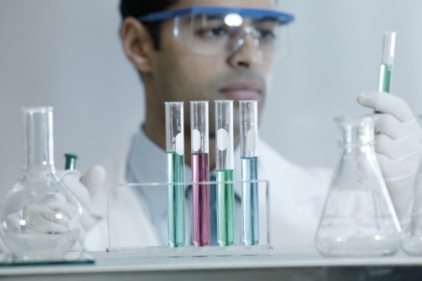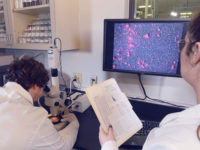 The collection and testing of dust samples is a long-established practice used by industrial safety and hygiene professionals to make informed dust collection decisions. While dust-testing protocols have not changed markedly in recent years, the importance of dust testing has changed. While knowing your dust has always been good practice, it is rapidly becoming a necessity in today’s regulatory climate.
The collection and testing of dust samples is a long-established practice used by industrial safety and hygiene professionals to make informed dust collection decisions. While dust-testing protocols have not changed markedly in recent years, the importance of dust testing has changed. While knowing your dust has always been good practice, it is rapidly becoming a necessity in today’s regulatory climate.
A segment on the CBS News series "60 Minutes" reported that "devastating dust explosions at American factories are more common now than ever. Since 1980, there have been at least 350 such explosions in the U.S., killing 133 people and injuring hundreds more."
In the meantime, OSHA has identified and contacted 30,000 companies considered to be at risk of explosion from combustible dusts. OSHA is addressing the issue aggressively through its National Emphasis Program on safe handling of combustible dusts and through enforcement of the "National Fire Protection Association (NFPA) 68 Standard on Explosion Protection by Deflagration Venting," a 2007 standard updated in 2013 that provides mandatory explosion venting requirements for dust collection applications involving combustible dusts. The main purpose of explosion venting is to save lives by preventing a dust collector from exploding, so the importance of getting this equipment right cannot be understated.
This article will review two types of testing: (1) explosibility testing, which determines whether a dust is combustible; and (2) bench testing, which pinpoints physical properties of the dust. Both categories of tests are needed to determine the right dust collection system for your application.
Explosibility testing
Every week brings new headlines about plants being fined for violating OSHA’s National Emphasis Program on safe handling of combustible dusts. To determine whether a dust is combustible, it must undergo explosibility testing in accordance with ASTM test methods as stated in the “National Fire Protection Association (NFPA) 68 Standard on Explosion Protection by Deflagration Venting.”
NFPA 68 stipulates that if a dust sample is available, it must be tested. The standard further states that it is the responsibility of the end-user (i.e., the plant or safety engineer) to commission testing and report on results. This is a noteworthy change from past practice; what used to be a “guideline” is now a “standard” and is regarded as mandatory.
Explosibility testing is available through several companies that specialize in explosion protection services. You can go directly to such a company or commission the testing through your dust collection supplier.
Using your dust sample, the lab will start with a screening test to determine whether the dust is inert or explosive. If the dust is inert, testing will stop there. If it is combustible, the lab will conduct further testing on dust cloud parameters to pinpoint the Kst (defined as the deflagration index of a dust cloud, or rate of pressure rise) and Pmax (the maximum pressure in a contained explosion). Costs may range from around $600 for screening only, to about $1,500 for the standard battery of ASTM explosibility tests, if needed.
The explosive index (Kst) and the maximum pressure rise (Pmax) of the dust should be determined by ASTM E 1226-12a, Standard Test Method for Explosibility of Dust Clouds.
Your dust collection equipment supplier will need the Kst and Pmax values in order to correctly size explosion venting or suppression systems. Failure to provide this information will increase your costs because the supplier will have to use worst-case estimates of the Kst and Pmax values or may even refuse to provide the equipment. The liability to the manufacturer and to the equipment purchaser is too high to ignore the life safety objectives.
Even if you believe your dust is inert, it still must be tested under NFPA 68. For example, paper dust may be inherently inert but if a coating is mixed in during processing, it can render the dust combustible. If your dust is found to be even slightly combustible, you will be required to use explosion venting equipment on your dust collector.
Bench testing
Whether you are planning a new dust collection system or updating existing equipment, dust collection is a complex challenge. Dust-sample bench testing is an excellent tool for knowing your dust better and assisting in accurate equipment selection.
Bench testing has many benefits. By identifying the dust characteristics properly, you can determine the right type of collector and filtration media for your needs and determine the right equipment sizing for energy savings and operational efficiency. This can help minimize maintenance problems and enable you to meet more stringent emission requirements while extending filter life.
A few independent test laboratories have dust collection experience and can perform bench testing at costs ranging from $300 to $1,000.
Editor’s Note: Prices may have increased since this article was first published.
Some equipment manufacturers have in-house test labs and offer free testing as a value-added service. Be sure, however, to find out if you are obligated to buy a dust collector from a manufacturer who conducts your tests.
The lab will ask for a sample and detailed data on the process generating the dust, the operating requirements, airflow conditions, temperature and humidity, etc. This application data gives context to your test program for more meaningful results.
Common bench tests include the following:
?Particle size analysis reveals the dust’s particle size distribution down to the submicron range and determines the filtration efficiency required to meet emissions standards. A dual-laser particle analyzer can pinpoint both the count (the number of particles of a given size) and the volume or mass spread of the dust. Knowing both is important because many dusts are mixed. Sieve analysis is a related test that measures large particle sizes (>100 microns).
?A video microscope provides visual analysis of the dust shape and characteristics. Together with particle-size analysis, this tool is vital for proper equipment selection, often helping to determine what type of collector should be used. For example, a microscope may be needed to see oil in the dust.
?Pychnometer testing determines the dust’s true specific gravity (the weight of a given material as a solid block) as opposed to the bulk density. It helps determine the efficiency of cyclonic-type collectors. Moisture analyzer equipment measures a dust’s moisture percentage by weight, providing information that can prevent moisture problems. A humidity chamber is used to see how quickly a dust will absorb moisture.
This helps to identify hygroscopic (moisture- absorbent) dust which requires widely pleated filter cartridges or bag-type filters, as these sticky dusts cause tightly pleated filters to plug up.
? Abrasion testing measures the relative abrasiveness of dust, enabling you to determine the optimal design of dust-handling components, including valves, inlets and ductwork.
? Velocity testing helps determine the correct dust collector and filter size, as well as the appropriate ductwork and discharge/hopper design.
Camfil APC’s state-of-the-art test lab is equipped to conduct a battery of bench tests on dust samples, as well as simulated full-scale testing that no other manufacturer can equal. These tests provide scientific analysis of your dust to take the guesswork out of equipment selection and help determine the best dust extractor design and filter media for the job. We can also commission tests to determine whether your dust is combustible and, if so, measure its explosibility characteristics.
Specialized testing
With a highly unusual or trouble-prone application, additional testing might be necessary. Explosion test labs have the capability to perform a variety of advanced tests using both small- and large-scale test vessels. A reputable lab will be able to make recommendations as to whether further testing is needed to analyze your combustible dust problem.
Similarly, after bench testing is completed, you might need further information to analyze a difficult dust or to meet especially stringent emissions control requirements. In both cases a large dust sample is run through a full-size collector on a test rig, so that dust particle size, pressure drop and other parameters can be precisely monitored and real-time emissions monitoring can be performed.
When you have finished testing your dust samples using these guidelines, you will know your dust much better. Knowing your dust is the key to making sure you have the best possible dust collection equipment for worker safety and comfort, emission control, plant cleanliness and compliance.


